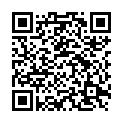|
|
|
| Module code: E2507 |
|
|
2V+1U+1P (4 hours per week) |
|
4 |
| Semester: 5 |
| Mandatory course: yes |
Language of instruction:
German |
Assessment:
Written exam, practical exam with composition (2 lab experiments, ungraded)
[updated 08.01.2020]
|
E2507 (P211-0081, P211-0082) Electrical Engineering and Information Technology, Bachelor, ASPO 01.10.2018
, semester 5, mandatory course, Kategorie 1 (electrical)
|
60 class hours (= 45 clock hours) over a 15-week period.
The total student study time is 120 hours (equivalent to 4 ECTS credits).
There are therefore 75 hours available for class preparation and follow-up work and exam preparation.
|
Recommended prerequisites (modules):
None.
|
Recommended as prerequisite for:
|
Module coordinator:
Prof. Dr.-Ing. Stefan Winternheimer |
Lecturer: Prof. Dr.-Ing. Stefan Winternheimer
[updated 10.09.2018]
|
Learning outcomes:
After successfully completing this course, students will be familiar with the basics of electromechanical energy conversion, in particular how to apply the basic laws of electrical engineering to solving problems in electrical machines. In addition, they will be able to use the acquired knowledge to determine the most important electromagnetic quantities in electrical machines. The course provides a basis for understanding the spatial and temporal relationships in electrical machines and will enable students to draw parallels between the properties of different machine types. The methods learned in this course also form the basis for entry into the advanced BA and MA "Electrical Machines" modules.
[updated 08.01.2020]
|
Module content:
1. Introduction 1.1 Applying Maxwell´s equations to the electrical machine 1.2 Magnetic circuit of an electric machine 1.3 Conductor parameters of an electrical machine 2 Windings, currents and air-gap flow2.1 Basic terms 2.2 Linear current density, electric loading 2.3 Magnetizing a coil and a winding 2.4 Winding factor 2.5 Matrix representation of winding magnetomotive forces (MMF) 2.6 Time-dependent excitation 2.7 Generating a rotating magnetic field 2.8 Representation of the air gap flow in a rotating reference frame 2.9 Commutator windings 2.10 Squirrel cage rotor winding 3 Air gap flow and induction 3.1 DQ representation of spatial dimensions in air gap induction 3.2 Influence of slots on air-gap flow and induction; Carter factor 3.3 Resultant air gap flow and air gap induction in a commutator machine 3.4 Resultant air gap flow and air gap induction in a synchronous machine 3.5 Resultant air gap flow and air gap induction in an asynchronous machine 4. Equivalent circuits electrical machines 4.1 Main and stray inductances 4.2 Main inductance of a coil and winding in a slotless cylindrical unsaturated machine 4.3 Main inductance of a coil and winding in a slotless cylindrical saturated machine 4.4 Main inductance of coil and winding in unsaturated machine with variable air gap geometry 4.5 Mutual inductance between windings in a slotless unsaturated machine 4.6 Influence of slotting on both sides of the air gap on main and mutual inductances 4.7 Equivalent circuit diagram of electrical machines 4.8 Induced voltage in windings of electrical machines 5. Force and torque in electrical machines 5.1 The role of magnetic energy in electromechanical energy conversion 5.2 The force on conductors in slots of electrical machines 5.3 The torque generated by currents per winding and the torque function 5.4 Electromagnetic torque as a function of air gap sizes
[updated 08.01.2020]
|
Teaching methods/Media:
Transparencies, blackboard, lecture notes and electronic handouts
[updated 08.01.2020]
|
Recommended or required reading:
Eckhardt, Hanskarl: Grundzüge der elektrischen Maschinen, Teubner, 1982 Richter, Rudolf: Elektrische Maschinen, Band 1: Allgemeine Berechnungselemente, Birkhäuser, 1951
[updated 08.01.2020]
|


